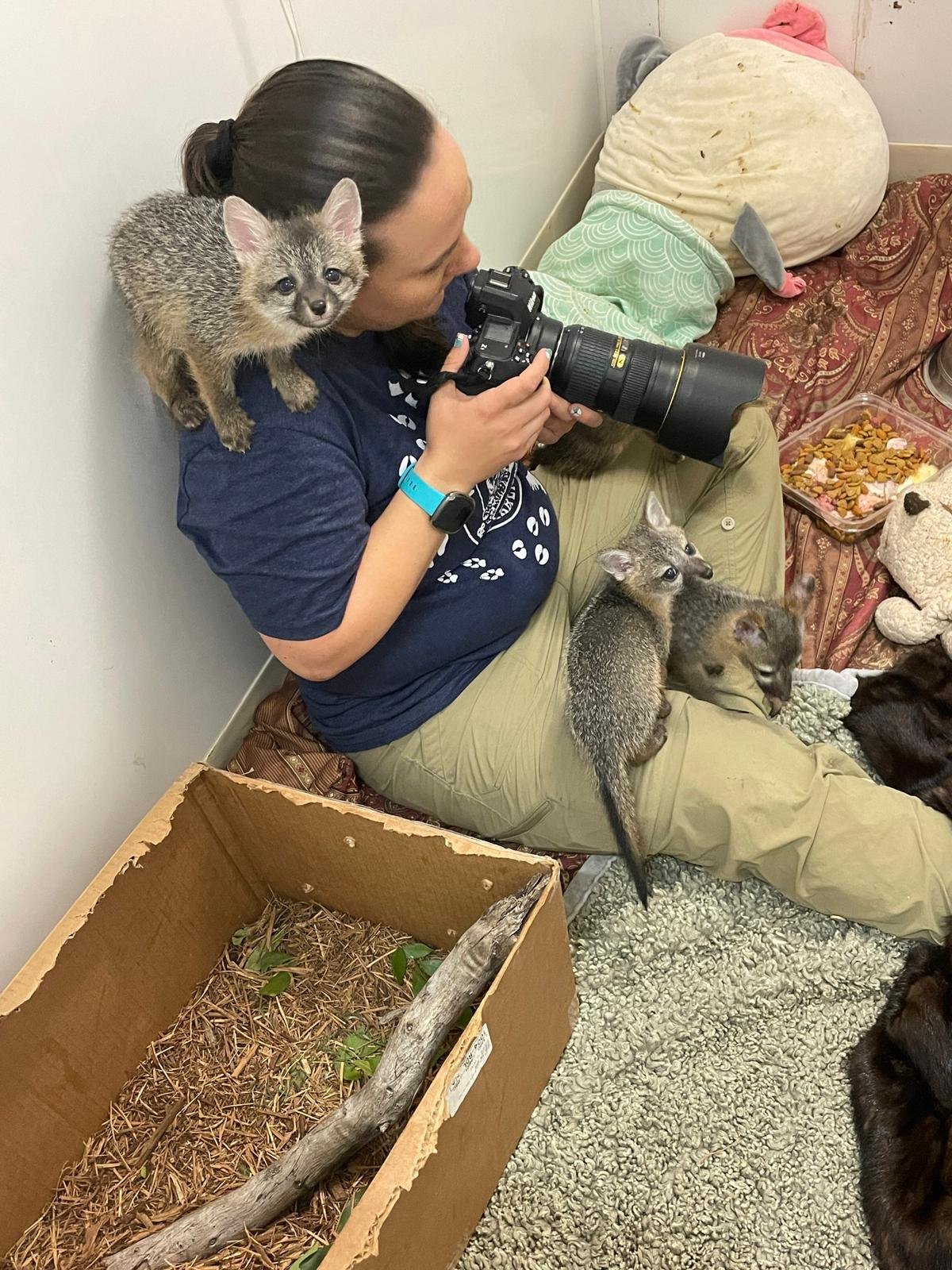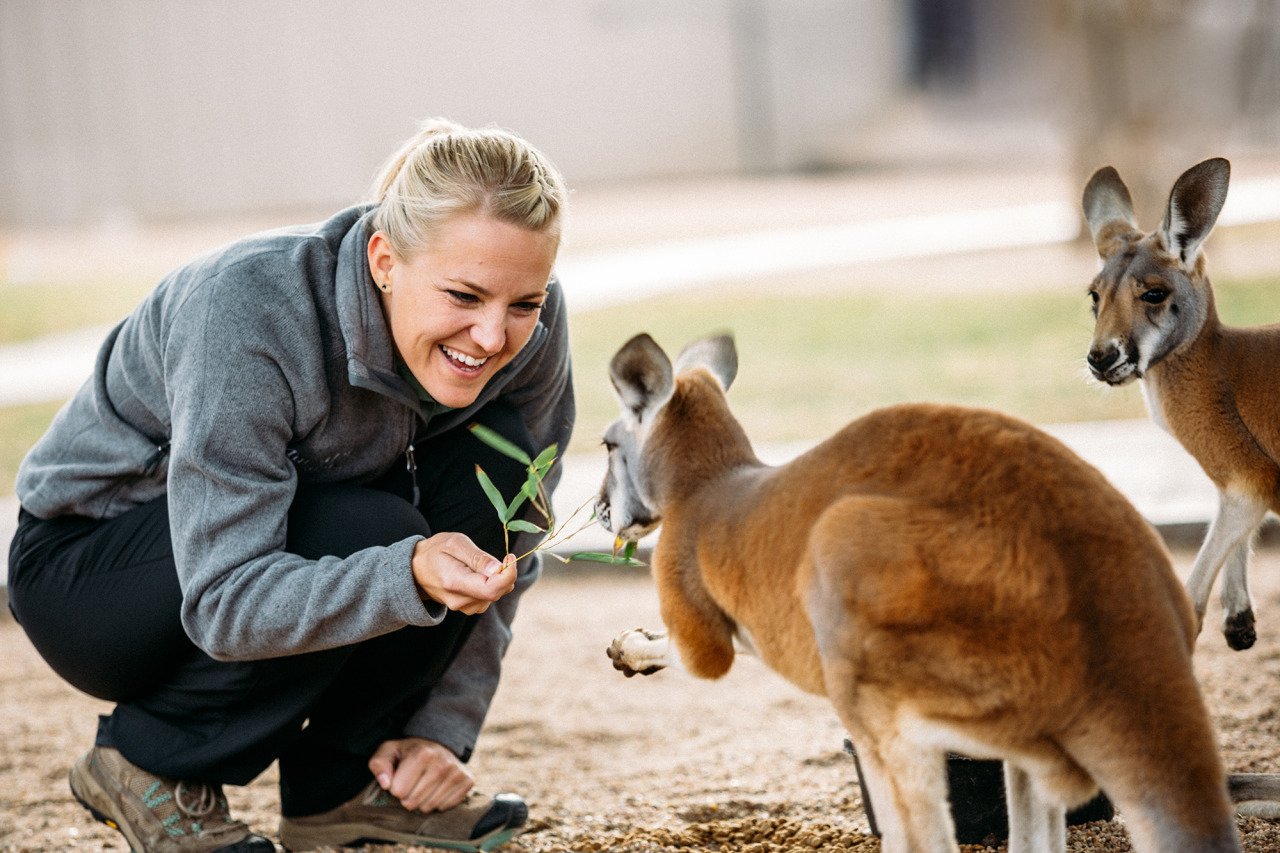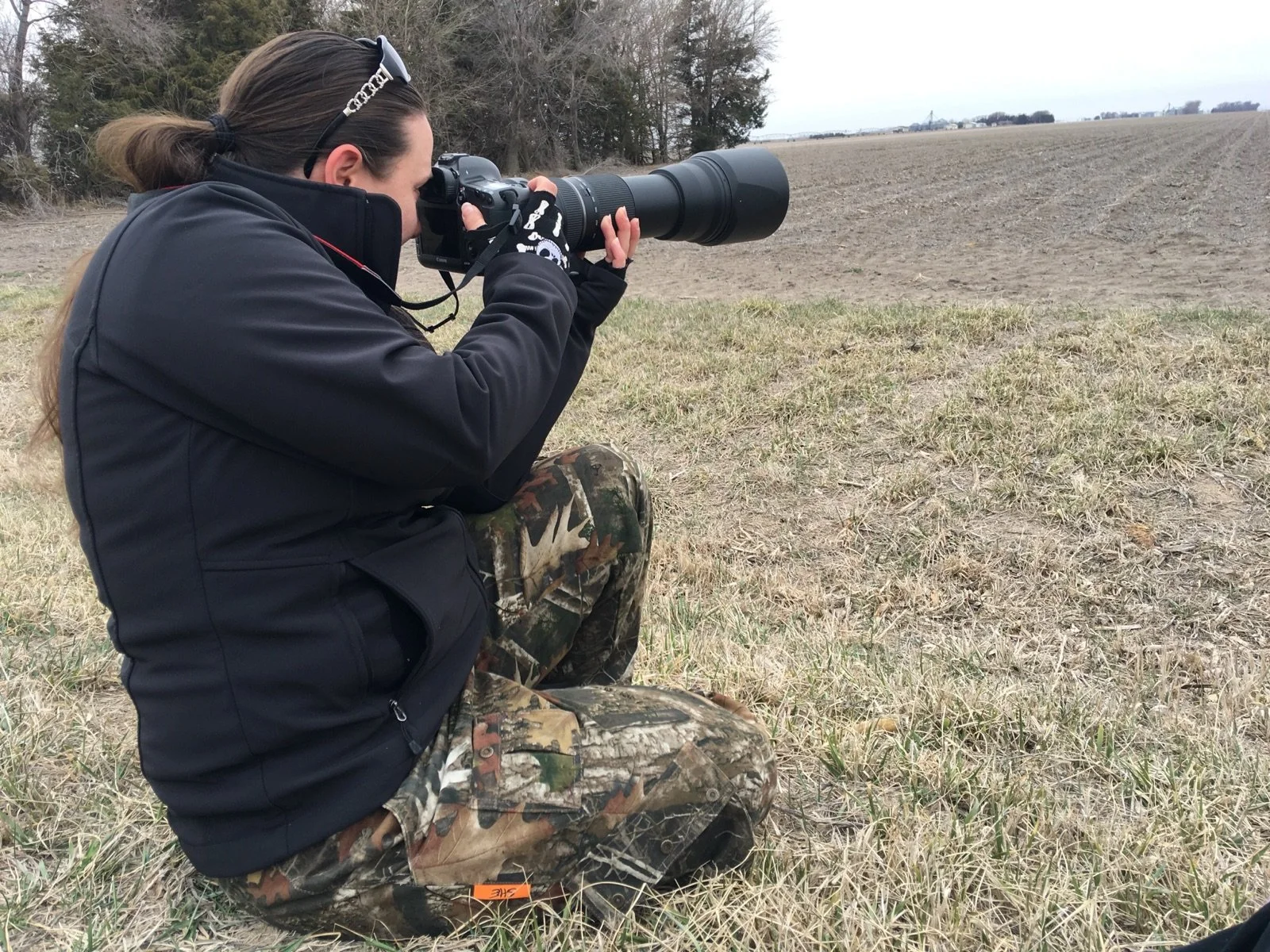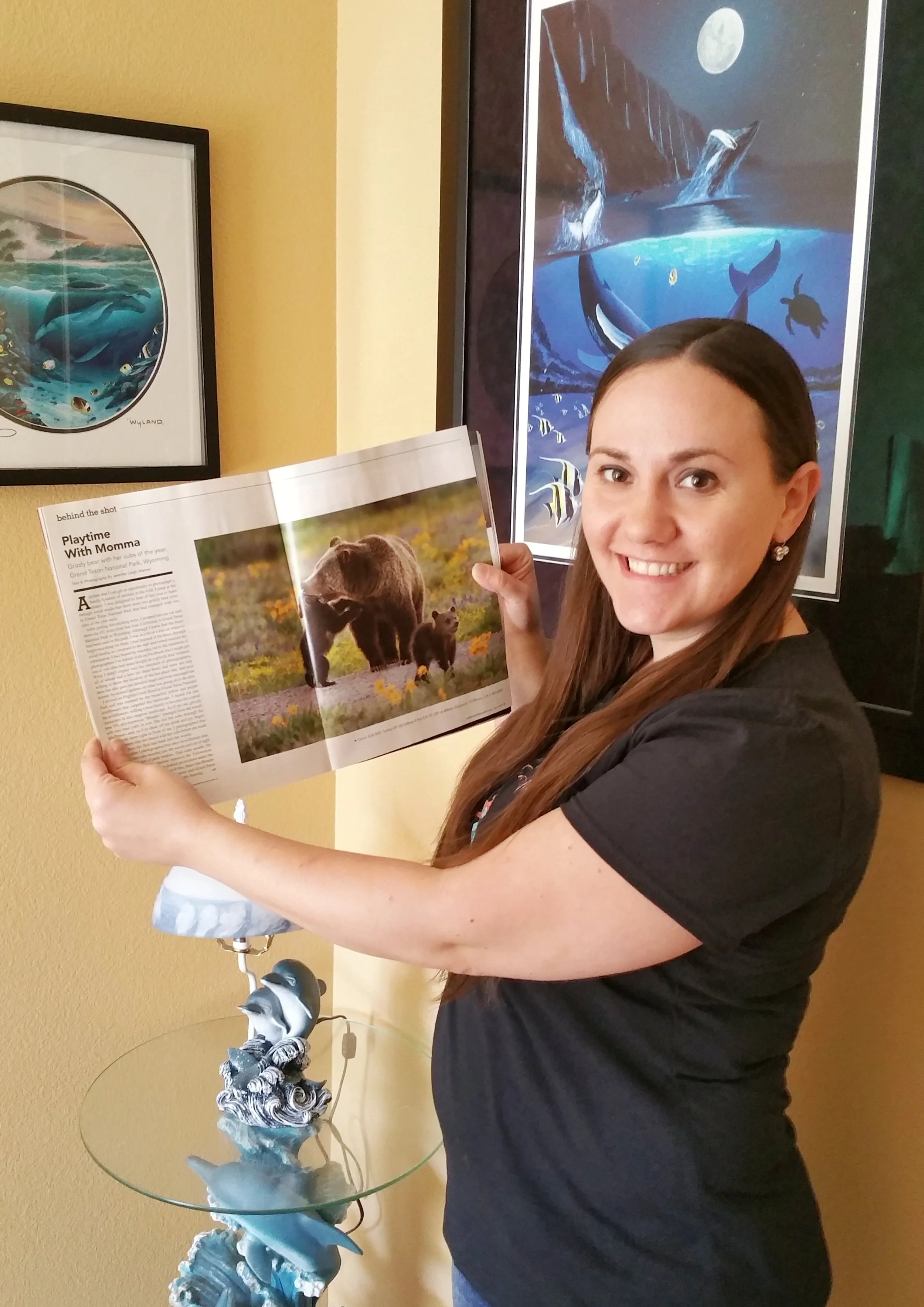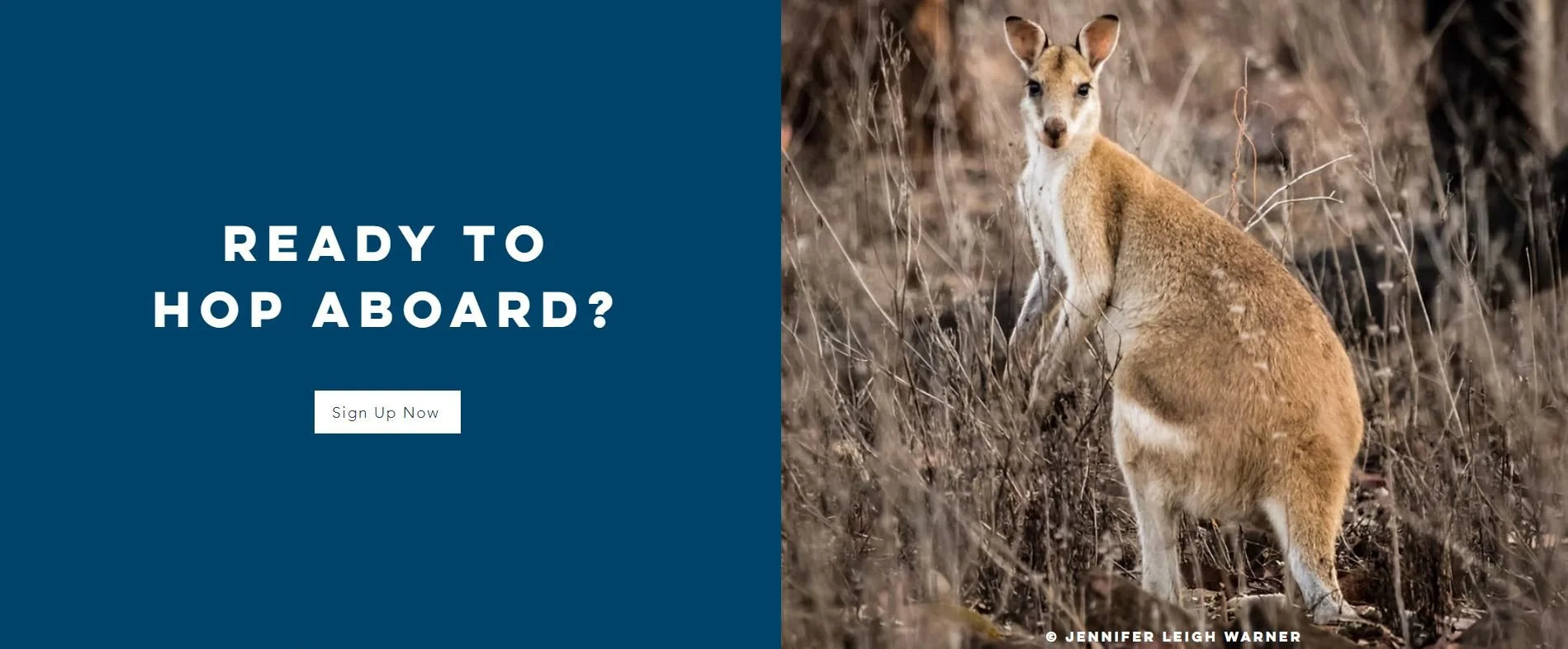5 Reasons You Should Attend the Conservation Storytellers Bootcamp at the Australia Zoo
Conservation Storytelling Bootcamp at the Australia Zoo
November 10 - 16, 2026
Attending the Conservation Storytellers Bootcamp at the Australia Zoo is a once-in-a-lifetime opportunity to develop photographic skills that directly support wildlife rescuers. Participants learn how to capture compelling images that highlight the urgent needs of animals and the critical work being done to protect them. The hands-on experience combines expert guidance with access to unique wildlife settings, enabling attendees to create powerful visual stories that raise awareness and inspire action for conservation efforts.
If you need convincing, here are five reasons you should attend this workshop.
Hands-on infield experiences
Photographing rescue baby grey foxes at the Wildlife Rescue and Rehabilitation center.
Hands-on infield experiences offer invaluable opportunities for learners to apply their skills in real-world settings. This setting not only allows for the development of photography skills but also provides insight into wildlife care and conservation efforts.
The Value of Hands-On Training
Hands-on training accelerates skill development by immersing learners directly in real-world scenarios. During the workshop you will have a unique opportunity to gain real-world training while working with the world-class organization, Wildlife Warriors. This program is designed to provide participants with invaluable insights into wildlife conservation and the art of storytelling.
Participants will have the chance to collaborate with leading conservationists and wildlife experts from Wildlife Warriors. This immersive experience allows you to gain firsthand knowledge from those actively involved in preserving diverse species and ecosystems.
Key Skills Developed
Wildlife Photography Techniques: Capturing animals in their natural habitat requires patience, timing, and an eye for detail.
Understanding Animal Behavior: Observing the animal’s behavior helps in anticipating their movements, leading to better photographic results.
Ethical Considerations: Ensuring the welfare of the animals while capturing images teaches respect for wildlife and ethical photography practices.
Technical Proficiency: Operating camera equipment in different settings and lighting conditions hones technical skills.
Impact on Conservation Efforts
In addition to developing photography skills, this hands-on experience raises awareness about wildlife conservation. It highlights the importance of wildlife rescue centers and their role in rehabilitating and protecting endangered species. Participants gain a deeper appreciation for conservation efforts and may be inspired to contribute to such causes.
Hands-on infield experiences offer unparalleled opportunities for skill development and personal growth. By engaging directly with real-world scenarios, learners not only enhance their technical abilities but also gain a profound understanding of wildlife conservation. This approach to learning is not only effective but also inspiring, as it combines practical skill-building with a meaningful cause.
2. Expert Instructors
Expert instructors, such as Stephanie Arne and Jennifer Leigh Warner, with real-world experience provide personalized guidance. Their hands-on knowledge allows them to tailor lessons to your unique learning style and pace, making challenging material more accessible. This personalized approach not only deepens your understanding but also builds confidence, empowering you to apply what you learn in practical, real-world situations.
Learning from TV Personality Stephanie Arne
Photo Credit - Mutual of Omaha
In the world of television, effectively conveying your message in front of the camera is an invaluable skill. Stephanie Arne, a renowned TV personality and wildlife conservationist, has mastered the art of engaging audiences and delivering compelling content. Here are some of the key skills and techniques you can learn from Stephanie Arne to enhance your on-camera presence.
Confidence and Authenticity
Stephanie Arne exudes confidence and authenticity, making her a relatable figure to her audience. To emulate this:
Believe in Your Message: Confidence begins with a deep belief in what you are communicating. Ensure that you are passionate and well-informed about your subject matter.
Be Yourself: Authenticity resonates with viewers. Share your genuine thoughts, emotions, and experiences to create a connection with your audience.
Embracing Technology
Stephanie Arne makes the most of technology to reach a wider audience. Consider these tips:
Utilize Social Media: Share your content across various platforms to increase your reach and engage with a global audience.
Incorporate Visuals: Use graphics, videos, and images to support your message and make it more engaging.
Stay Updated: Keep abreast of the latest trends and technologies in media to stay relevant and innovative.
Continuous Learning and Adaptation
Arne's career exemplifies the importance of lifelong learning and adaptation:
Seek Feedback: Regularly ask for feedback from peers and your audience to identify areas for improvement.
Adapt to Change: Be open to new ideas and approaches, and be willing to step out of your comfort zone to grow as a communicator.
Invest in Training: Consider workshops or courses in public speaking, media training, or storytelling to enhance your skills.
By learning from Stephanie Arne, you can improve your ability to convey your message effectively in front of the camera, captivating and engaging your audience in meaningful ways.
Exploring Conservation Wildlife Photography with Jennifer Leigh Warner
Photo by Colleen Childers
Conservation wildlife photography is a remarkable field that combines the art of photography with the mission of wildlife conservation. Jennifer Leigh Warner is a renowned photographer in this domain, and learning from her can significantly enhance your skills in capturing the essence of wildlife, the dedication of conservationists, and the efforts of rescue teams.
Understanding the Role of Conservation Wildlife Photography
Conservation wildlife photography aims to raise awareness about the challenges faced by wildlife and the importance of preserving their natural habitats. It serves as a powerful tool to inspire action and drive change. Through compelling images, photographers like Jennifer Leigh Warner highlight the beauty and vulnerability of wildlife, making a persuasive case for conservation efforts.
Techniques for Capturing Wildlife
Patience and Persistence: Wildlife photography requires immense patience. Animals do not pose for the camera, so you must be willing to wait and observe their natural behavior.
Understanding Animal Behavior: Knowing the habits and habitats of your subjects can significantly improve your chances of capturing compelling images. Jennifer emphasizes the importance of research in understanding how different species interact with their environment.
Using the Right Equipment: A good camera with a powerful zoom lens is essential for capturing detailed images without disturbing the wildlife. Tripods and remote shutters can also be useful for stability and capturing shots from a distance.
Respecting Wildlife and Their Habitats: Ethical considerations are paramount. Jennifer advocates for photographers to maintain a respectful distance and avoid disrupting the natural behaviors of wildlife.
Documenting Conservation Efforts
Photographing conservationists and rescue teams is another crucial aspect of conservation wildlife photography. These images tell the stories of the people working tirelessly to protect endangered species and restore habitats.
Capture Emotion and Dedication: Highlight the passion and commitment of conservationists. Focus on moments that showcase their hard work and the challenges they face.
Showcase Collaborative Efforts: Document teamwork and the collaboration between different organizations and communities in conservation initiatives.
Telling a Story Through Images
Jennifer Leigh Warner emphasizes the importance of storytelling in conservation wildlife photography. Each photograph should convey a narrative that engages the viewer and evokes a response.
Crafting a Narrative: Think about the story you want to tell with your images. Consider the beginning, middle, and end, and how each photo contributes to the overall message.
Creating Impactful Imagery: Use composition, lighting, and perspective to create powerful images that resonate with viewers and inspire them to take action.
Learning about conservation wildlife photography from experts like Jennifer Leigh Warner can be an enriching experience. By honing your skills in this field, you not only become a better photographer but also contribute to the vital cause of wildlife conservation. Embrace the challenge, respect the subjects, and tell stories that matter.
3. Networking
Stephanie and Jennifer networking at the National Geographic event during Jackson Wild in 2019.
Networking is a crucial component of professional development, particularly in fields like conservation storytelling, where collaboration and idea exchange are vital. The Conservation Storytellers Bootcamp at the Australia Zoo provides an ideal setting for networking, offering participants numerous opportunities to connect with like-minded individuals and industry leaders.
Building Professional Connections
Attending the workshop allows participants to meet professionals from various backgrounds, including filmmakers, photographers, writers, and conservationists. These connections can lead to fruitful collaborations, mentorship opportunities, and even job offers. Establishing a network of contacts provides access to a wealth of knowledge and resources that can significantly enhance one's career in conservation storytelling.
Learning from Experts
The workshop features presentations and sessions led by experts in the field, including Luke Reavley, Editor-in-Chief of Crikey! Magazine for Australia Zoo and Tim Davison, conservation filmmaker and producer, offering insights into the latest trends and techniques in conservation storytelling. Networking with these experts can provide invaluable learning opportunities and guidance for budding storytellers. Engaging in conversations with these professionals can offer new perspectives and inspire innovative approaches to storytelling.
Sharing Ideas and Inspiration
Networking at the workshop encourages the exchange of ideas and inspiration among participants. Discussing projects, challenges, and successes with peers can lead to the development of new concepts and strategies. This collaborative environment fosters creativity and innovation, essential elements for effective storytelling that can drive conservation efforts.
Expanding Your Audience
Connecting with other storytellers and conservationists can help expand your audience reach. By sharing your work with others, you increase the likelihood of your stories being shared and promoted within the network. This can lead to greater visibility and impact for your conservation messages, amplifying your voice and contributing to the broader conservation movement.
Building a Supportive Community
Networking helps build a supportive community of individuals passionate about conservation storytelling. This community can offer encouragement, feedback, and support as you navigate the challenges of the field. Having a network of peers who understand your passion and goals can be incredibly motivating and reassuring.
Networking during the Conservation Storytellers Workshop at the Australia Zoo is indispensable for anyone looking to make a significant impact in the field of conservation storytelling. By building professional connections, learning from experts, sharing ideas, expanding your audience, and fostering a supportive community, participants can enhance their skills, broaden their horizons, and contribute to the vital cause of conservation.
4. Get published in Crikey! Magazine
Jennifer’s first feature magazine story.
Select participants will have their images published in Crikey! Magazine.
Getting your images published in a prestigious magazine like Crikey! can be a significant milestone in your career as a photographer. Not only does it provide a platform to showcase your work to a wider audience, but it also enhances your professional credibility. Here are some key benefits:
Increased Visibility and Exposure
One of the most immediate benefits of having your images published in a magazine is the increased visibility. Magazines often have a wide readership, which means your work will be seen by a large and diverse audience. This exposure can help you reach potential clients, collaborators, and other photographers who might be interested in your style and expertise.
Credibility and Prestige
Being published in a reputable magazine adds a layer of credibility and prestige to your portfolio. It acts as a form of professional validation, indicating that your work meets high standards of quality and creativity. This can be especially beneficial when seeking new opportunities or when trying to establish yourself as an authority in your field.
Portfolio Enhancement
A publication in a magazine is a valuable addition to any photographer's portfolio. It demonstrates your ability to create work that appeals to professional editors and resonates with a wider audience. Including such publications in your portfolio can make it more compelling and impressive to potential clients or employers.
Personal Satisfaction and Motivation
Seeing your work in print can be incredibly rewarding and serve as a powerful motivator. This achievement can boost your confidence and inspire you to continue honing your craft and pushing creative boundaries. The personal satisfaction of sharing your vision with a broad audience is a priceless aspect of the publishing process.
Opportunities for Further Recognition
Once your work is published, it may attract attention from other media outlets, galleries, or competitions. This could lead to further recognition and opportunities for exhibitions, awards, or features in other publications. The ripple effect of a magazine publication can significantly expand your career prospects.
5. Stay at the Australia Zoo
The Australia Zoo, located on the Sunshine Coast in Queensland, is a world-renowned wildlife conservation facility founded by the late Steve Irwin, famously known as "The Crocodile Hunter." A visit to this iconic zoo is a bucket list item for many animal enthusiasts, offering a unique opportunity to witness an impressive array of wildlife and learn about conservation efforts.
Staying at the Crocodile Hunter Lodge is not only about enjoying a unique and luxurious experience but also about supporting the zoo’s mission of wildlife conservation and education. Proceeds from your stay contribute to vital conservation projects and help fund research and rehabilitation efforts for endangered species.
Visiting the Australia Zoo and staying at the Crocodile Hunter Lodge is more than just a vacation; it's an opportunity to connect with nature, learn about conservation, and create unforgettable memories. Whether you are an avid wildlife enthusiast or simply looking for a unique travel experience, this adventure promises to be both enriching and inspiring.
The Conservation Storytellers Workshop at the Australia Zoo is more than just a learning experience; it's a gateway to making a real difference in the world of wildlife conservation. By engaging with Wildlife Warriors, participants will leave with a deeper understanding of conservation challenges and the skills to effectively share these critical stories with the world. Whether you're a budding storyteller or an aspiring conservationist, this workshop offers a transformative experience that will enrich your personal and professional journey.


